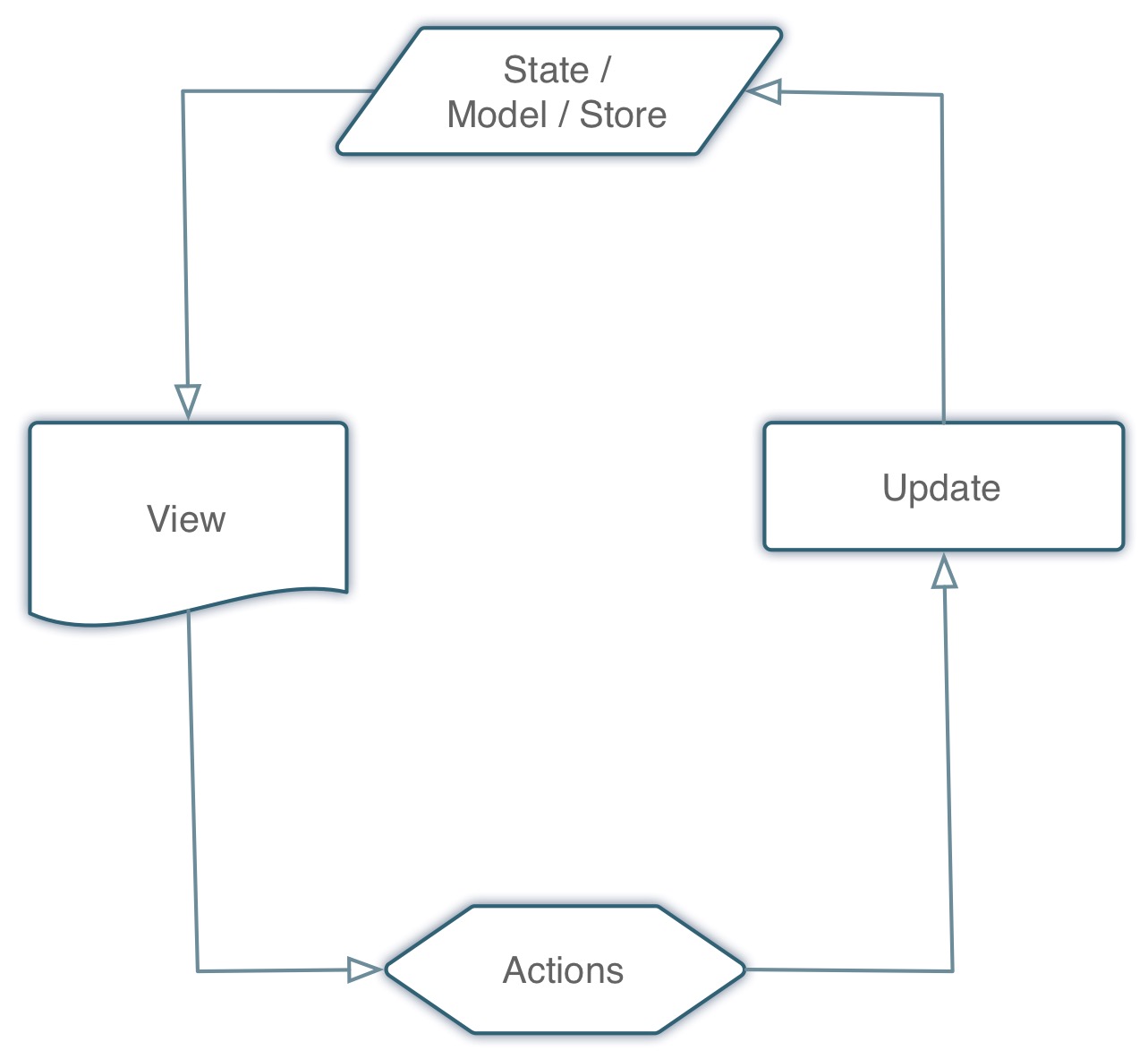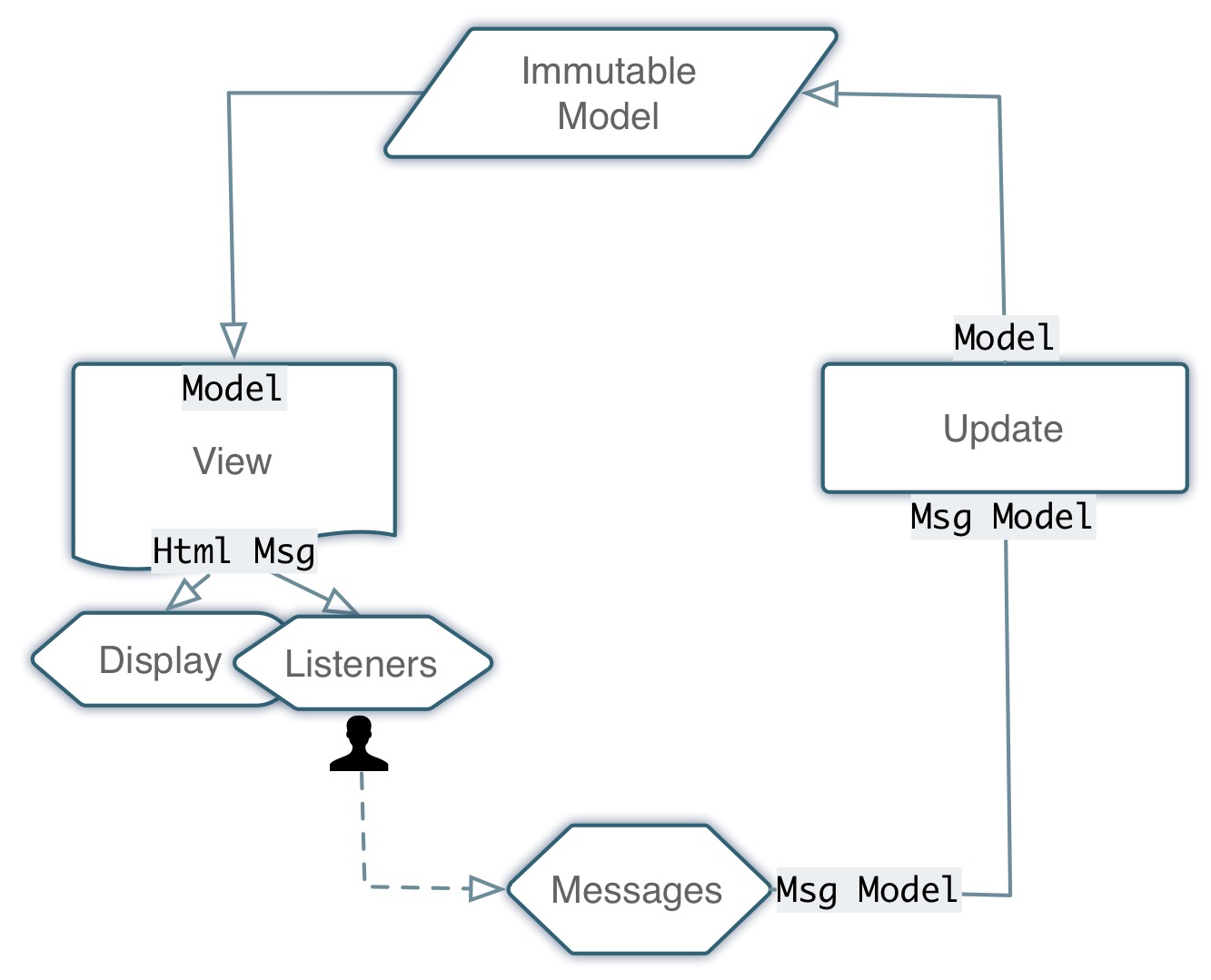Elm 0.??, please ignore
App Architecture
Applications are programs that can actually be run and produce output.
ELM-HTML
- blazing fast
- virtual DOM
lazy rendering
HTML, CSS, JavaScript interoperability
- Elm Unidirectional Application Architecture (similar concepts as Redux)
- Immutable data structures
import Html exposing ( div, text )
import Html.Attributes exposing ( class )
sampleSection : Html
sampleSection =
div [ class "section" ] [ text "Section 1" ]
Unidirectional Architectures

For instance, with React
var HelloMessage = React.createClass({
render: function () {
return <h1>Hello {this.props.message}!</h1>;
}
});
React.render(<HelloMessage message="World" />, document.body);
main
Every Elm app calls a main function when we run it.
main =
-- something goes here
The application doesn't need to declare a module definition in it at all -- but you should for large applications.
However defined, only Main can define ports (a topic otherwise beyond the scope of this guide). The Main module must define a main value, whose type is restricted to a handful of things that the compiler can display. Other modules should avoid defining main.
Static content
import Html
main =
Html.text "Hello"
Dynamic Content
Structure of an Elm program
Interactive Elm programs are written following a pattern very similar to the familiar MVC (Model-View-Controller) pattern, as follows
Model - Something that records the current state of the application. No behavior. Only data. It holds the single source of truth, as to the state of the application.
Update - Function that manages any change in the state of the application. Think of it as a state engine. It fires whenever a message is received and returns a model.
View - The function that renders the view. It is fired whenever the model changes and transforms the model into a UI that people see. Typically, a HTML page.
Basic Flow
- Model is initialized
- View is displayed, from model
- Something happens (for instance, as a result of the user actions).
- A Message is dispatched
- The update function reacts to the message
- New model is created
- New view is rendered
Beginner Application

Skeleton
import Html exposing (..)
-- MODEL - Data structure required for holding the application state.
type alias Model = { ... }
-- UPDATE - Declare all possible application states and how to react to them.
type Msg = Reset | ...
update : Msg -> Model -> Model
update msg model =
case msg of
Reset -> ...
...
-- VIEW - Visual representation of the current application state
view : Model -> Html Msg
view model =
...
Full example
elm-zippopotamus
Program Application

Skeleton
import Html.App as Html
main =
Html.program
{ init = init, update = update, view = view, subscriptions = \_ -> Sub.none }
(source: elm-platform - Upgrading to 0.17)